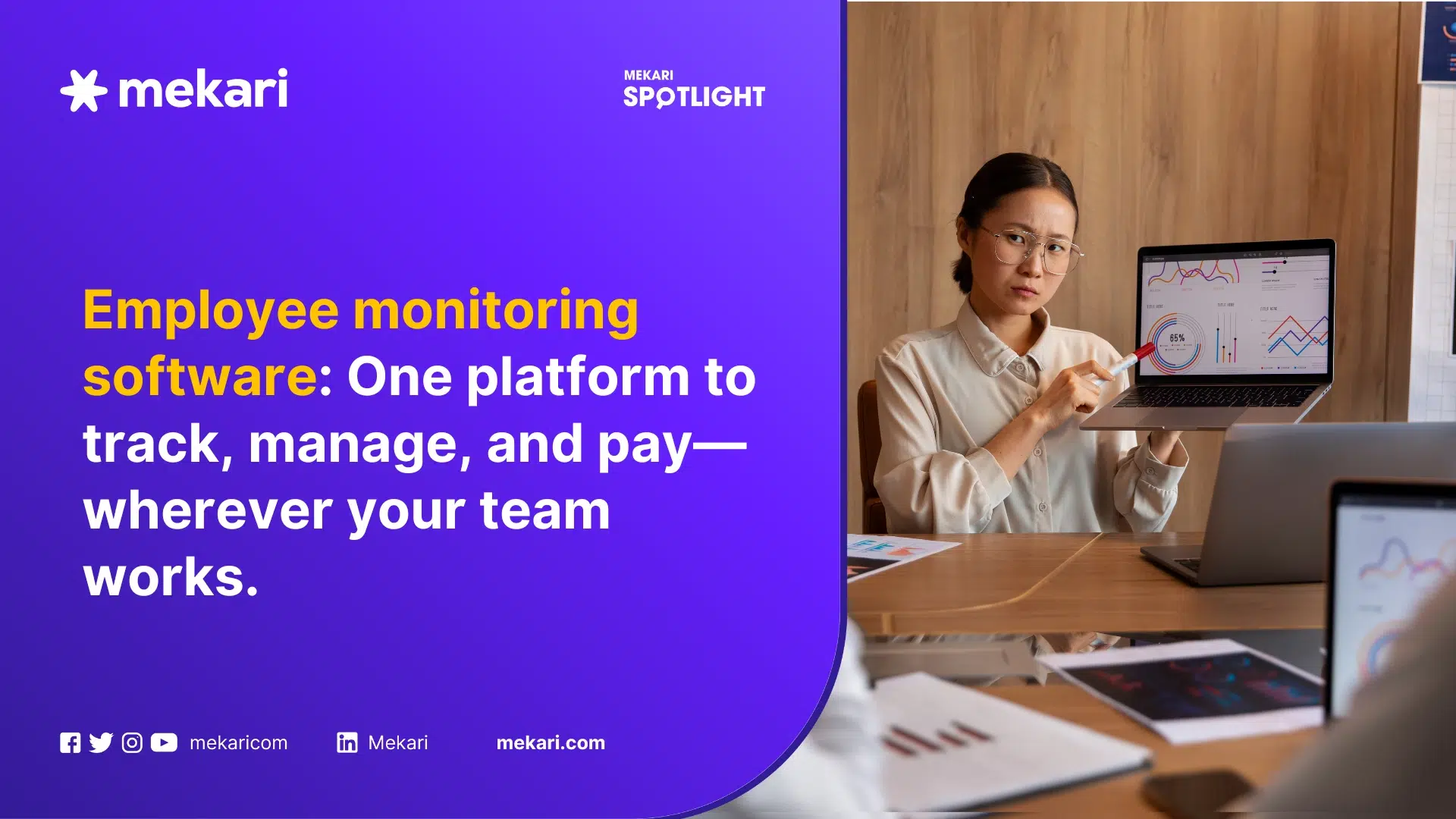Mekari Insight
- Employee monitoring software supports both remote and on-site team productivity.
- Transparency and smart tracking build trust, not surveillance.
- Mekari Talenta offers a complete employee monitoring software within HRIS solution with GPS check-in, face recognition, payroll sync, and real-time dashboards—all tailored to Indonesian businesses.
As hybrid and remote work models grow in Indonesia, the need for remote employee monitoring software in Indonesia becomes more urgent than ever.
But it’s not just remote teams—on-site and hybrid employees also need transparent, automated tracking to ensure fairness and accountability.
With 60% of global companies already using monitoring tools, Indonesian businesses must adapt to stay productive, compliant, and efficient.
Employee monitoring software helps companies manage attendance, performance, and data in one seamless system—whether teams are in the office or working from home.
Together, these integrated features make employee monitoring software a powerful backbone for modern HRIS systems.
Core features of employee monitoring software
Together, these integrated features make remote employee monitoring software a powerful backbone for modern companies.
1. Time & attendance tracking
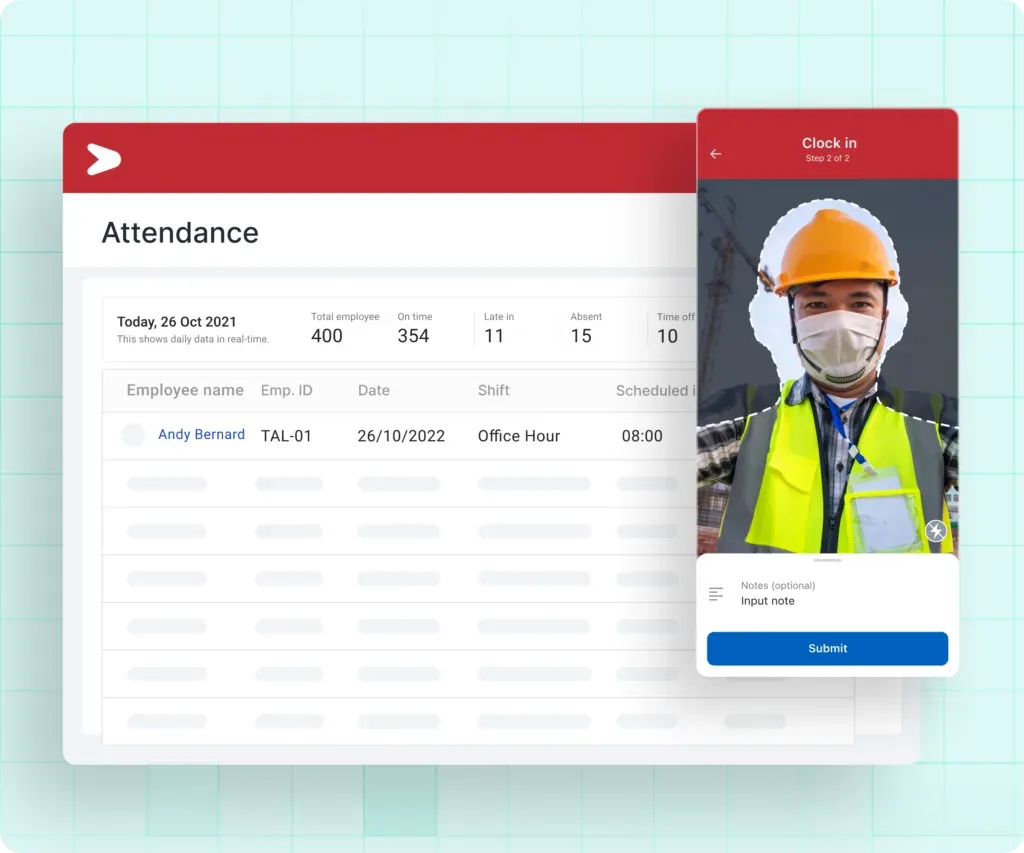
This feature automates the essentials of attendance management—clocking in/out and break times—while even allowing offline use, so data syncs once back online. Employees can clock in from anywhere: office, field, or home.
- Automated clock-in/out & break logs ensure accurate work hours without manual input.
- Offline sync guarantees data integrity even in poor connectivity zones.
- Geo-tagging with selfie validation confirms presence and identity, reducing buddy‑punching or proxy attendance.
2. GPS & mobile attendance
Ideal for field and on‑the‑go staff, this feature adds precision and trust to attendance.
- Geo-tagged clock-ins pinpoint exact location.
- Liveness detection (e.g. eye blink or head movement) ensures selfies are live and not spoofed
- Ensures employees are where they claim to be—especially useful for delivery, sales, or maintenance teams.
3. Analytics & reporting
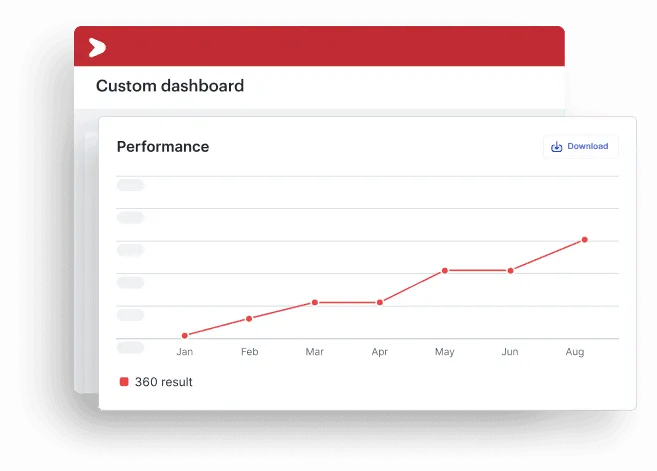
Beyond tracking hours, this delivers insights into productivity and performance.
- Detailed reports cover active vs idle time, task durations, and application/website usage.
- KPI dashboards allow HR and managers to monitor goal achievement and workload trends.
- HRIS integration puts all data into one unified dashboard for seamless decision-making and performance reviews.
4. Security & alerts
Monitoring software doubles as a security watchdog, identifying unusual or risky behaviors.
- Risk detection flags risky file transfers or access to unauthorized systems
- Real-time notifications allow HR to act quickly on potential breaches.
- Comprehensive audit trails are crucial for compliance with privacy, labor, and data regulations.
5. Direct payroll integration
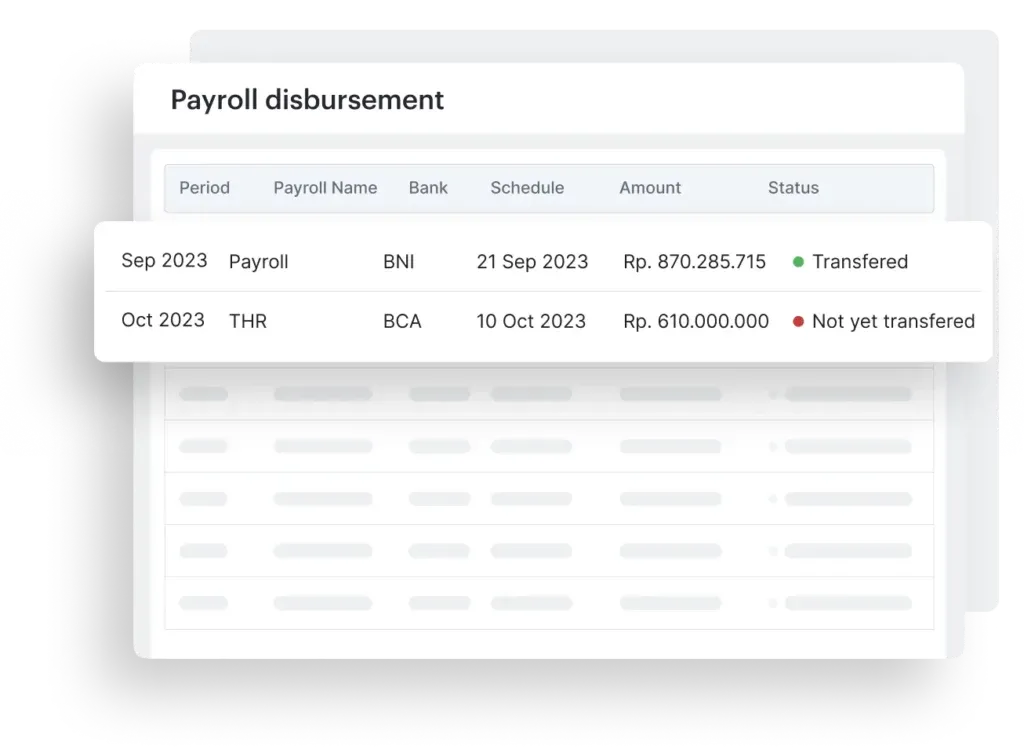
This transforms attendance data into payroll accuracy and efficiency.
- Attendance, overtime, leave, and breaks flow directly into payroll calculations.
- Automated tax, BPJS, and social contribution computation eliminates manual errors.
- Saves HR hours, speeds up payroll cycles, and minimizes disputes over pay.
Read More: Payroll, Contracts & Employment Laws in Indonesia 2025Benefits of using remote employee monitoring software
By deploying employee monitoring software, companies in Indonesia can foster a fair, efficient, and secure environment—empowering both WFH and WFO teams through structure, transparency, and mutual accountability.
1. Boost productivity and accountability
Implementing monitoring software raises focus across both remote and office workers. A study by Time Doctor found that productivity improved by up to 39% when monitoring tools were used.
Remote employees tend to stay on-task when their activity is visible, while in-office teams benefit from transparent tracking that discourages time-wasting and helps distribute workload fairly.
Read More: How to Conduct Effective Employee Background Checks in Indonesia2. Enhance engagement and trust
Rather than fostering distrust, transparent monitoring can build engagement when used correctly.
Gartner reports that 55% of flexible workers are high performers, compared to 36% in traditional office roles.
When employees understand that monitoring exists to support efficiency—not micromanage—they feel trusted, valued, and motivated.
Clear communication of objectives and access to personal productivity data builds a culture of mutual respect rather than surveillance.
3. Support flexible work-life balance
Monitoring tools help make flexible schedules viable without losing oversight.
Research shows remote staff reclaim about 62 hours of productive time per year by reducing commutes and interruptions.
With accurate tracking, companies can offer flexible hours or hybrid models with confidence—employees enjoy autonomy and maintain accountability, bridging the gap between results and trust.
Baca Juga: Employee Benefits in Indonesia: A Guide for Foreign Companies4. Strengthen security and compliance
Protecting company data is vital in both remote and office environments.
Monitoring software flags unusual behavior—like unauthorized data transfers or policy violations—and documents an audit trail for investigations or legal compliance.
This proactive control is crucial to safeguard intellectual property and meet regulatory standards.
5. Improve operational transparency
Access to activity data builds transparency for both employees and management.
Tools track application usage, idle time, and task duration—helping teams identify workflow efficiencies and bottlenecks.
This shared visibility empowers individuals to self-optimize and enables managers to guide performance fairly.
Callouts for improvement become data-driven, collaborative discussions rather than estimations.
6. Increase retention and reduce errors
Monitoring contributes to fairness and trust, leading to greater retention.
Remote-friendly companies have 25% lower turnover rates, and employees are often willing to sacrifice pay for remote or hybrid options.
Transparent, equitable tracking and recognition improve morale, and real-time data catches discrepancies early—cutting down payroll errors, over/under-reporting, and helping HR resolve issues before they escalate.
Tips for choosing remote employee monitoring software in Indonesia
By using this framework, you can confidently select a remote employee monitoring software that’s legally compliant, easy for staff to use, scales with your business, and offers dependable local support.
1. Transparency & privacy compliance
Choosing software that prioritizes transparency and respects data privacy is critical, especially with growing concerns about surveillance.
The ideal tool should allow organizations to define what data is collected, when, who accesses it, and for what purpose, supporting both informed consent and data minimization.
In Indonesia, clear communication—preferably in Bahasa—about monitoring policies helps build trust with employees and ensures alignment with privacy regulations.
2. User experience: easy install, minimal performance impact
Ease of deployment and smooth operation boosts adoption and minimizes disruption. Leading platforms offer lightweight clients that install in minutes and run silently without slowing down employee devices.
A user-friendly interface—ideally in Bahasa Indonesia—encourages engagement and reduces the need for tech support, making the system a seamless part of daily routines.
3. Scalability: modular for teams of any size
Your choice should support growth—from small teams to enterprise scale—without requiring a platform swap.
The best solutions are modular, allowing additional features like GPS tracking, behavior alerts, or advanced analytics to be activated as needed.
This ensures you only pay for what you use while providing flexibility as your headcount or tracking complexity increases.
4. Integration capabilities: payroll, tax (PPh21/BPJS), performance modules
Full integration with HRIS, payroll, tax systems (like PPh 21 and BPJS), and performance management tools is non-negotiable for seamless operations. Monitoring data should automatically feed into attendance records, overtime calculations, and KPI dashboards.
This reduces manual data entry, eliminates mistakes, and speeds up payroll processing—essential in the Indonesian context where tax and compliance are critical.
Baca Juga: Indonesia Corporate Income Tax Guide: Rates, Incentives & Deadlines5. Local presence
A local or regional provider understands the unique demands of Indonesian businesses—from regulations to culture.
Bahasa documentation, customer service aligned with Indonesia business hours, and localized onboarding and training differentiate truly supportive vendors.
Users appreciate direct, Bahasa-speaking support and a clear understanding of local legal requirements.
Read More: 9 Key Insights to Understand Business Culture in IndonesiaBest remote employee monitoring software in Indonesia
As the workplace continues to evolve, employee monitoring software is no longer just a “nice-to-have” — it’s a critical tool for ensuring transparency, productivity, and fairness across both remote and on-site teams.
Whether your employees are working from home, in the field, or at the office, monitoring tools help businesses stay on track, manage compliance, and make better people decisions based on real data.
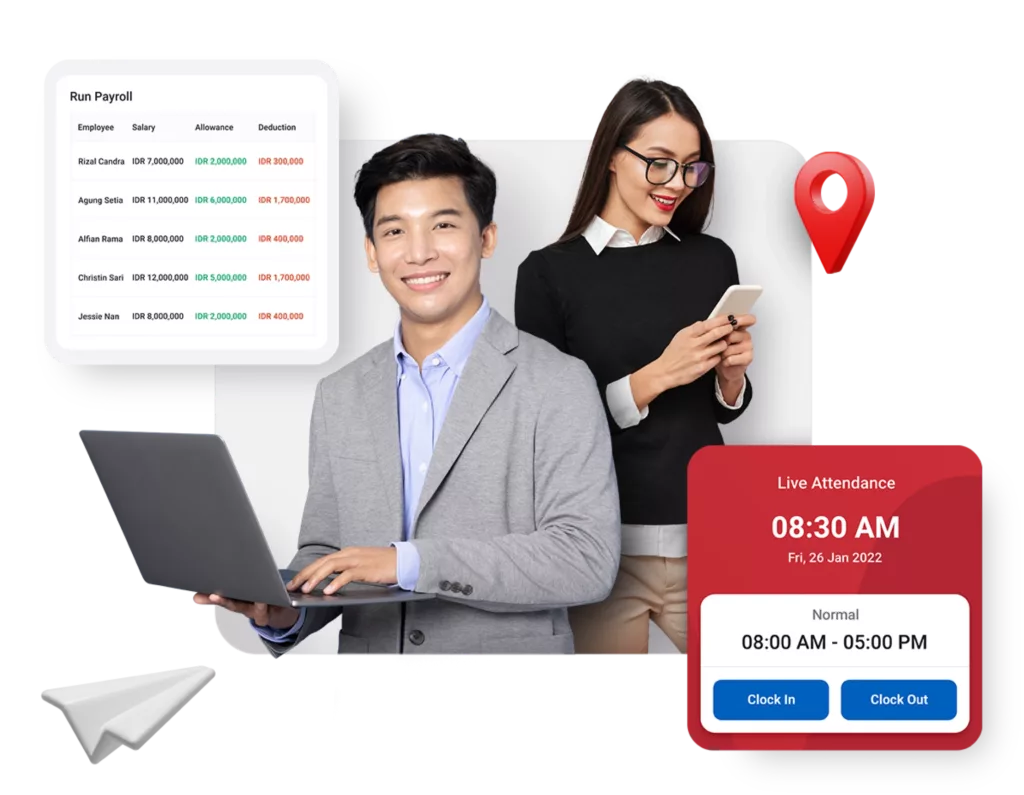
For companies in Indonesia, Mekari Talenta offers the most complete and reliable remote employee monitoring solution — built not just for remote teams, but for everyone. With Mekari Talenta, you can manage employee schedules, attendance, and productivity in one powerful HRIS platform.
Here’s why Talenta stands out:
- Seamless shift & attendance management: Set up work schedules without conflicting shifts and sync data directly from fingerprint machines.
- Flexible access: Employees can clock in anytime, from mobile or desktop.
- Smart fraud prevention: With GPS, face recognition, and liveness validation, every attendance is valid and verifiable.
- Transparent & customizable policies: Set clear rules for lateness, breaks, and overtime.
- Integrated with payroll: All attendance and overtime records automatically flow into payroll calculations — accurate, fast, and error-free.
- Real-time insights: Monitor productivity and team performance directly from your dashboard.
With Mekari Talenta, HR teams no longer need to juggle multiple tools. You get a unified system that’s smart, scalable, and ready to support your growing workforce — wherever they are.
